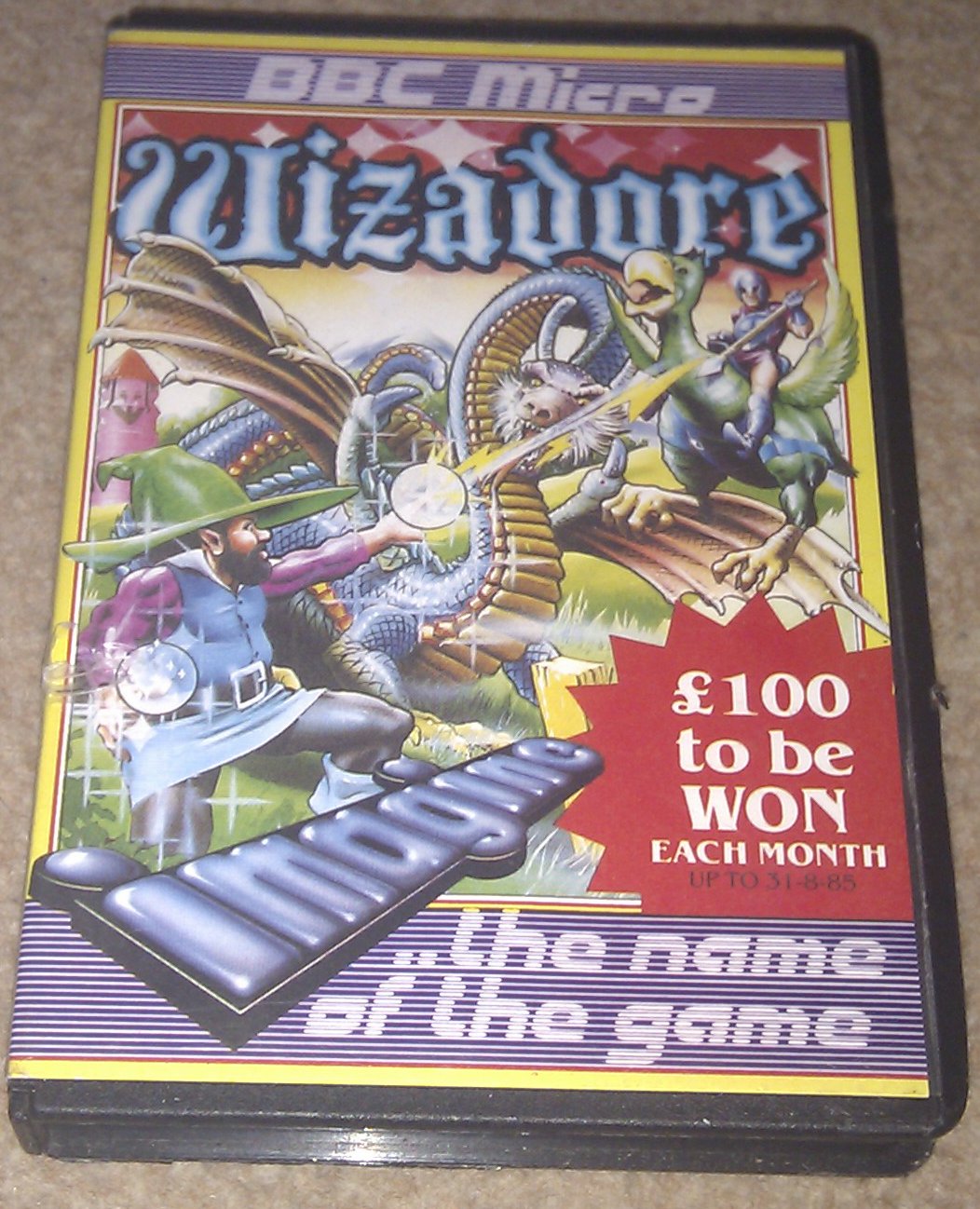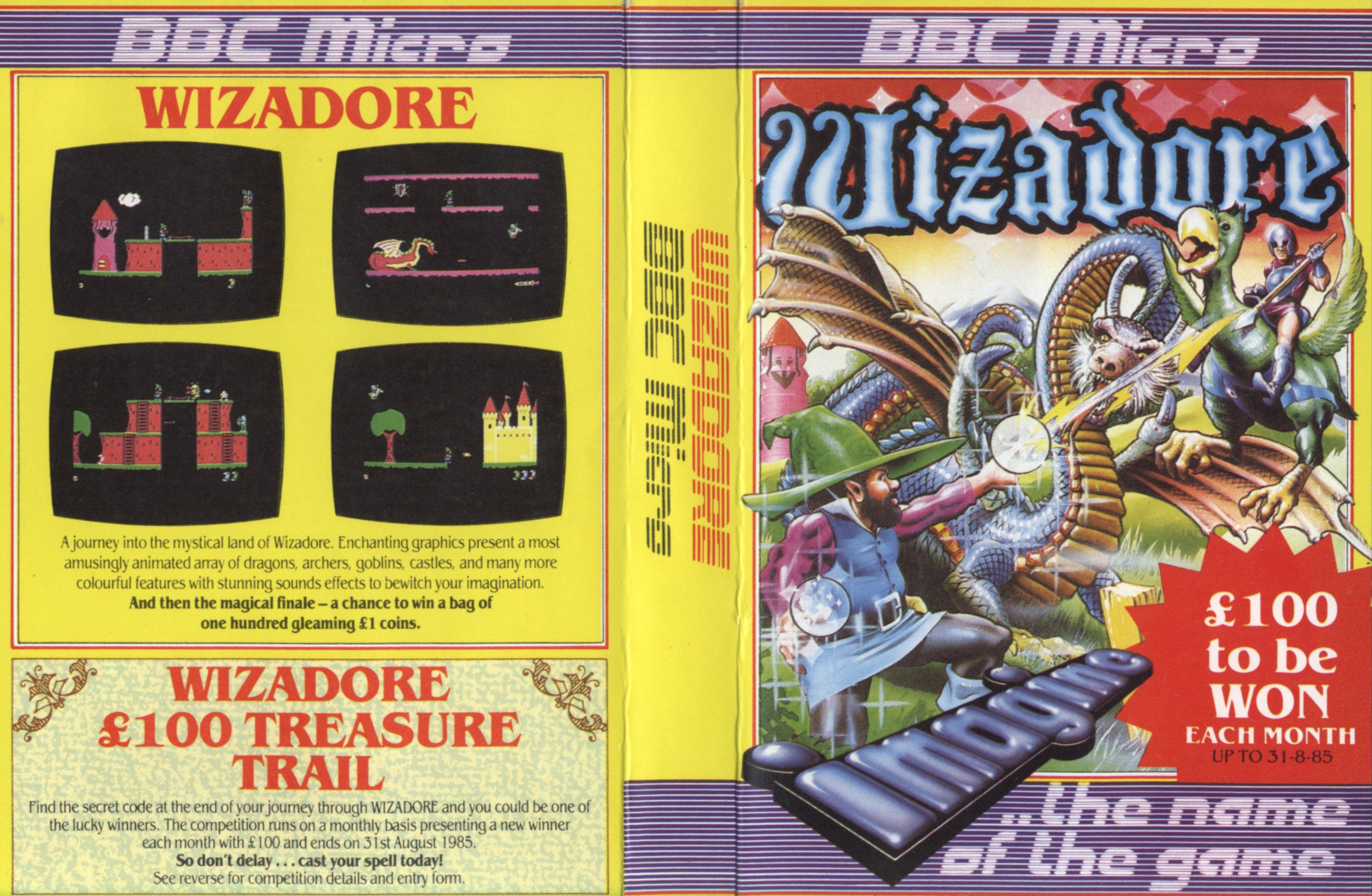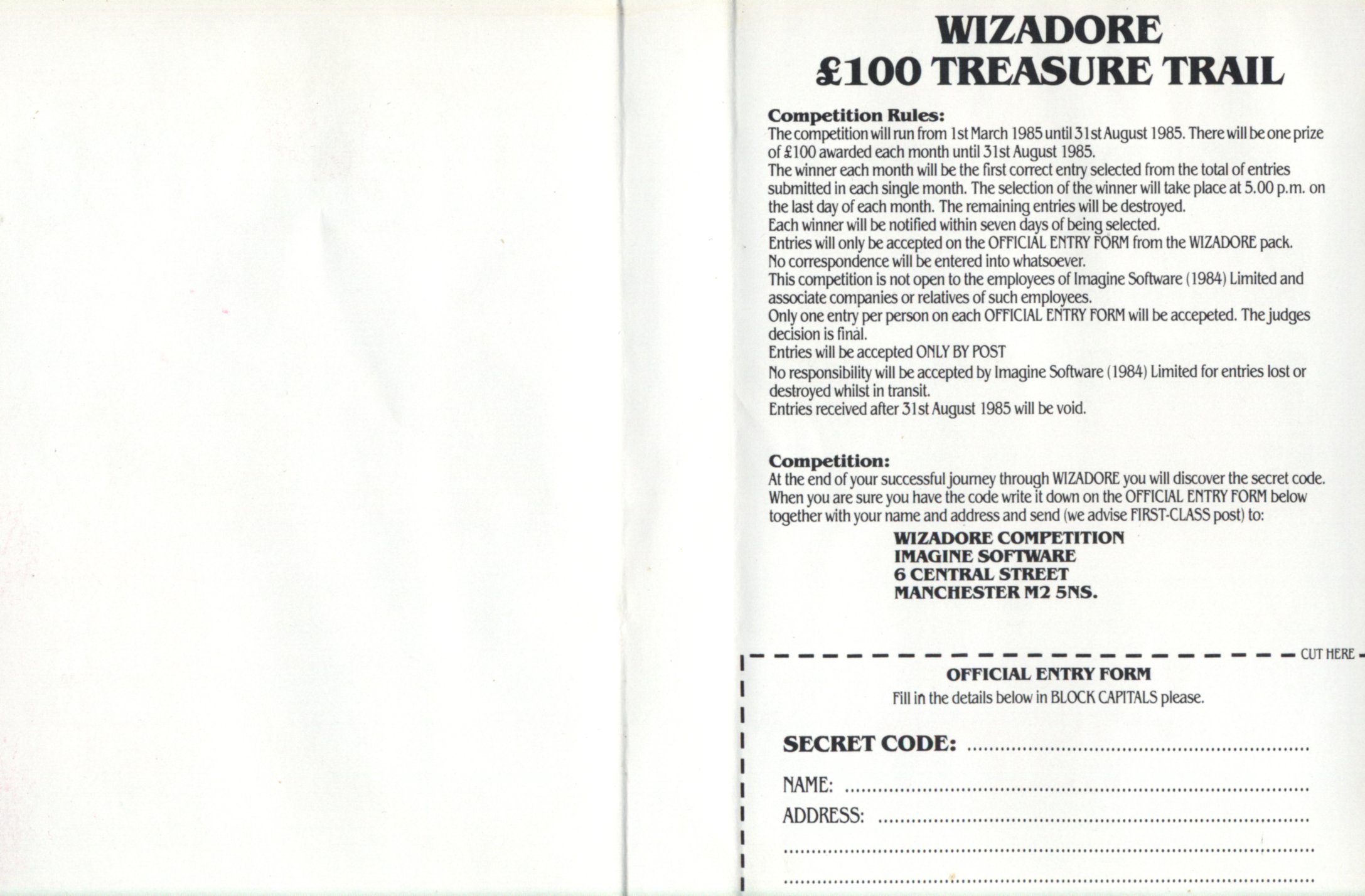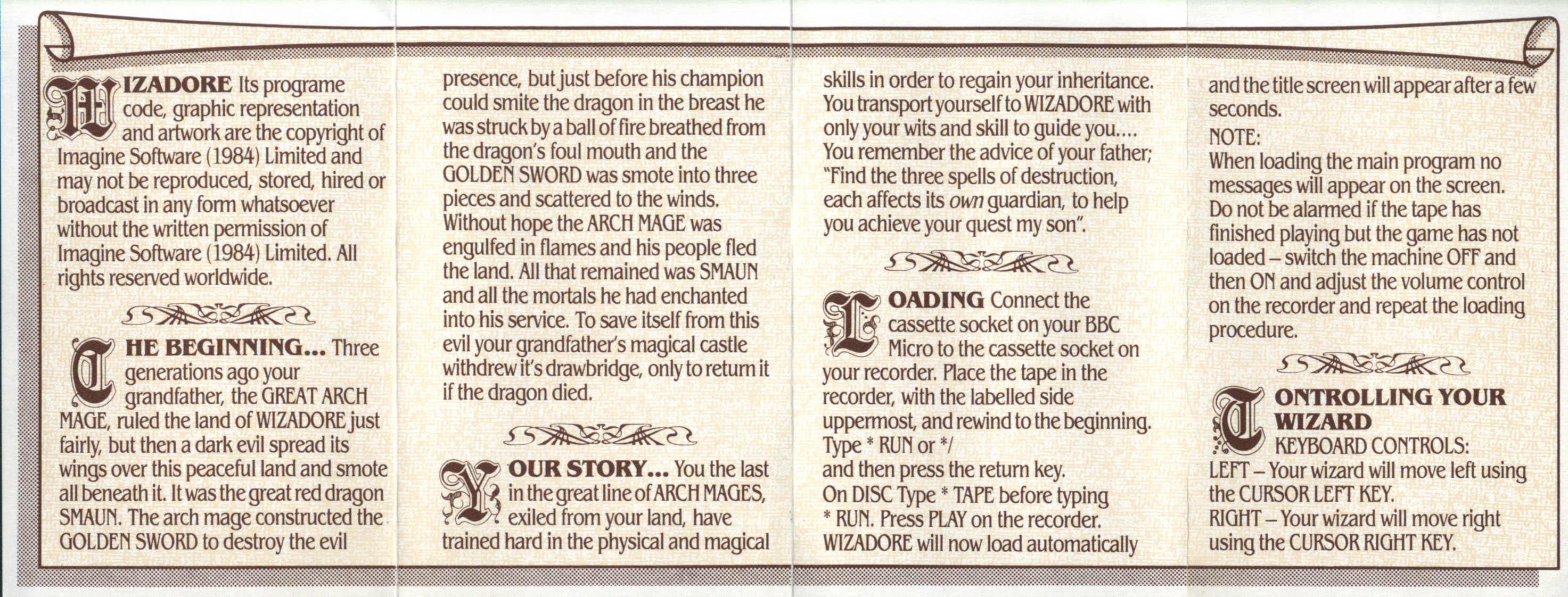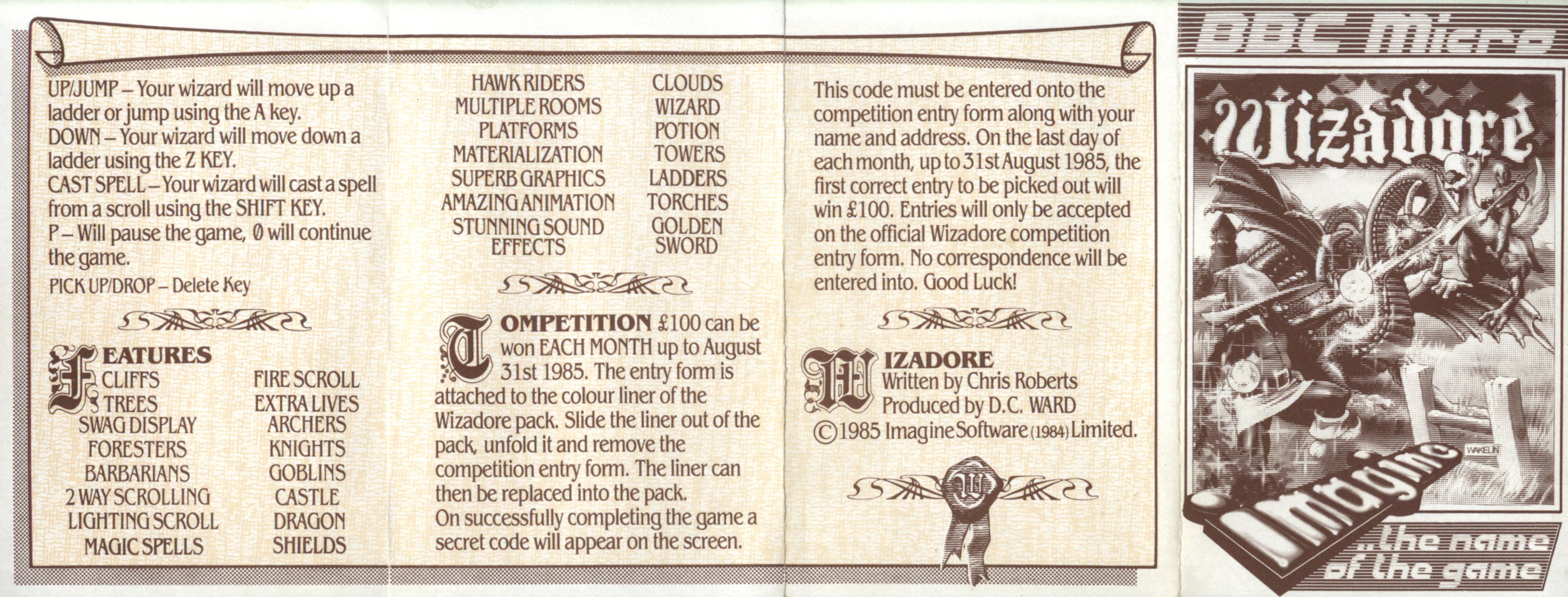Wizadore was Chris Roberts’ first commercially sold game outside of magazines and was published by Imagine in 1985. Roberts got the publishing contract via Martin Galway, who should be a familiar name to most retrogamers. Galway went to the the same school as Roberts and although they didn’t get on at the time, they ended up working together on numerous games together afterwards. This continued for years with Galway working at times for Origin on games such as Times Of Lore and Wing Commander 3. He is probably most famous though for producing some of the best music on the Commodore 64’s SID chip.
Roberts originally attempted to get Wizadore published by Ultimate (who would later became Rare) having made the game in his own time. The main problem was that the BBC wasn’t seen as a games machine and was primarily used in schools, with the far cheaper Spectrum and C64 being the two major players in home gaming in the UK. At this time, Galway was working for Ocean who were trying to launch the Imagine brand. Imagine only had one half finished game and Galway managed to persuade them to publish Wizadore to expand the range. This gave Roberts his major break into the industry at the age of 16. It went on to be a bestseller and led to more work writing the BBC conversion of Match Day.
Wizadore offered entry into several monthly draws for £100 for anyone who could complete it. This wasn’t common but it was far from the first game to offer a real world prize. The example that springs to mind here was the game Pimania, which was originally published on the ZX81. The whole game was a series of cryptic clues, meant to give the time, date and location of somewhere to be to claim the one off prize. This was so obscure that it was years before anyone won it. I can’t imagine many people made it to the end of Wizadore without cheating either.
The game itself is a simple platformer with smooth horizontally scrolling screens and a 3 item inventory. Scans of the instructions are above but the basic idea is to get the 3 parts of the sword to kill the dragon. You don’t start with any offensive weaponry but there are 3 scrolls in the game which can be picked up and used to cast offensive spells. These spells each destroy a certain type of enemy, but the archers were all invulnerable as far as I could tell. There is a little flickering with the sprites, but the game runs extremely smoothly and it’s a long way from the Kong game a couple of years earlier.
Rather that the usual load of screenshots, I thought I’d do a longplay for this game and upload it to Youtube. I didn’t realise quite how difficult it was going to be when I started however. It’s fair to say that every single jump has to be pixel perfect. Even climbing ladders is difficult as the game uses the same key for up and jump. This can lead to all sorts of grief when trying to get on or off a ladder quickly. The main challenge is in jumping over arrows launched by the many archers, but if this can be mastered then the game is potentially completable with enough practice. For anyone wanting to give this a go, the first screen is a great example of just how hard this game is and getting the scroll requires a lot of practice.
The other challenge is in juggling inventory and navigating around the map. The world isn’t huge but because of the limited inventory plenty of backtracking is involved to fetch objects left behind. I nearly finished the game a couple of times only to discover I’d made it unwinnable by leaving something in the wrong place. The full playthrough is below. It won’t make for the most entertaining viewing at nearly 30 minutes but it does offer an easy way to see the ending.
The ending of the game isn’t much reward for all the effort, although I don’t expect many people ever saw it. It would have been nice to see the dragon fall over or something but it does at least have an ending which puts it ahead of most games of the era. I did enjoy the journey to get there, although I’m glad to have the modern option of savestates.
Not having owned a BBC back in the day, I’ve little basis for judging the game but comparing it to Spectrum platformers of the time it’s not as much fun as Manic Miner and nowhere near Jet Set Willy. Having said that, neither of those games had smooth scrolling and this was a great effort for a 16 year old publishing his first game. I can easily see that I would have spent ages on it back in the day if I’d gone for a BBC instead of a Spectrum. It’s a game that appears to be fondly remembered among those who played it back then but from what I’ve heard, Strykers Run is Roberts’ real classic from his pre-Origin days. Before I get to that, I’ll have a look at Match Day next which was his second published game on the BBC.

